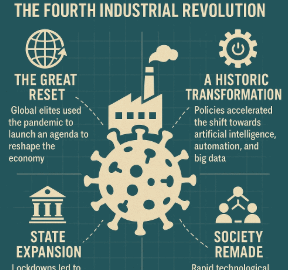“The Economic Transformation of America: 1600 to the Present” by Robert L. Heilbroner and Aaron Singer is a comprehensive exploration of the economic evolution of the United States from its colonial beginnings to the modern era. The book provides a detailed analysis of how various economic, social, political, and technological changes have shaped the nation over centuries. Heilbroner, a renowned economist and historian, presents the economic history in a broader context, connecting it with the political and social dynamics of different periods.
Overview:
The book traces the economic development of America in several phases, beginning with the early colonial period and moving through the industrial revolution, the rise of capitalism, the Great Depression, post-World War II prosperity, and the modern economic landscape of globalization and technological advancement. Heilbroner’s narrative emphasizes the interplay between economic forces and broader historical changes, including political ideologies, cultural shifts, and social transformations.
Key Themes and Concepts:
- Colonial Economy (1600-1776):
- Heilbroner begins by examining the colonial economy, characterized by mercantilism and the dependence on agricultural production, particularly cash crops like tobacco and cotton.
- The colonial period is marked by the relationship between the American colonies and European powers, particularly Great Britain, and how trade, taxation, and mercantilist policies laid the groundwork for the American Revolution.
- Industrialization and Capitalism (1776-1865):
- After independence, the book discusses the early foundations of American capitalism, including the rise of manufacturing, the impact of inventions such as the cotton gin and the steam engine, and the growth of domestic markets.
- Heilbroner highlights the transportation revolution (canals, railroads) that facilitated the expansion of markets and the development of a national economy.
- The book covers the role of slavery in the Southern economy and its impact on the national economic framework leading up to the Civil War.
- Post-Civil War Economic Expansion (1865-1920):
- The period following the Civil War is characterized by rapid industrialization, urbanization, and the rise of large-scale corporations.
- Heilbroner details the emergence of monopolies and trusts, the role of industrial tycoons (like Carnegie and Rockefeller), and the labor struggles that accompanied the growth of factories and urban centers.
- This era also sees significant economic disparity and social upheaval, prompting early regulatory measures and debates over the role of government in the economy.
- The Great Depression and the New Deal (1929-1945):
- The book provides a detailed account of the causes and consequences of the Great Depression, emphasizing how the stock market crash of 1929 and subsequent economic collapse reshaped American economic policy.
- Heilbroner examines the New Deal policies introduced by Franklin D. Roosevelt, including public works programs, financial reforms, and social safety nets that aimed to stabilize the economy and provide relief to the unemployed.
- The New Deal represents a shift toward a more interventionist government role in economic management, setting the stage for future economic policies.
- Post-World War II Prosperity and Transformation (1945-1970s):
- The book explores the period of unprecedented economic growth and prosperity following World War II, characterized by rising consumerism, suburbanization, and the expansion of the middle class.
- Heilbroner discusses the rise of the welfare state, the development of new technologies, and the increasing globalization of the American economy.
- The challenges of the 1970s, including inflation, oil crises, and economic stagnation, are analyzed as signs of deeper structural shifts.
- Modern Economic Developments (1980s to Present):
- In the final chapters, Heilbroner and Singer focus on the recent economic transformations, including the rise of neoliberal economic policies, deregulation, the decline of manufacturing, and the shift toward a service-based economy.
- The book addresses issues such as globalization, technological change, income inequality, and the challenges of adapting to a rapidly changing global economic landscape.
- The authors also reflect on the future of the American economy and the role of government policy in navigating economic change.
Analysis and Conclusion:
- Interdisciplinary Approach: Heilbroner’s analysis integrates economic, social, and political perspectives, offering readers a holistic understanding of how America’s economy has transformed over time. The book presents economic history not in isolation but as intertwined with the larger historical narrative of the country.
- Focus on Change and Continuity: The narrative emphasizes both the continuities and changes in American economic development, highlighting how foundational principles like capitalism and innovation have remained constant, even as specific economic practices and policies have evolved.
- Critical Examination of Economic Policies: Heilbroner critically examines key economic policies and practices, such as the New Deal, deregulation, and neoliberal reforms, analyzing their successes, failures, and impacts on American society.
Significance of the Book:
- Educational Value: “The Economic Transformation of America” is widely used as a textbook in economics, history, and political science courses. It provides a broad yet detailed account of the economic history of the United States, making it a valuable resource for students and scholars.
- Relevance to Modern Debates: The book’s exploration of economic inequality, government intervention, and the challenges of globalization makes it highly relevant to contemporary discussions about economic policy and the future direction of the American economy.
Robert L. Heilbroner’s “The Economic Transformation of America” offers a comprehensive and thought-provoking account of the nation’s economic evolution. It illustrates how economic developments are deeply interconnected with social, political, and technological changes. The book provides insights into the forces that have shaped America’s economic landscape and highlights the ongoing challenges and opportunities in the nation’s pursuit of growth and prosperity.







